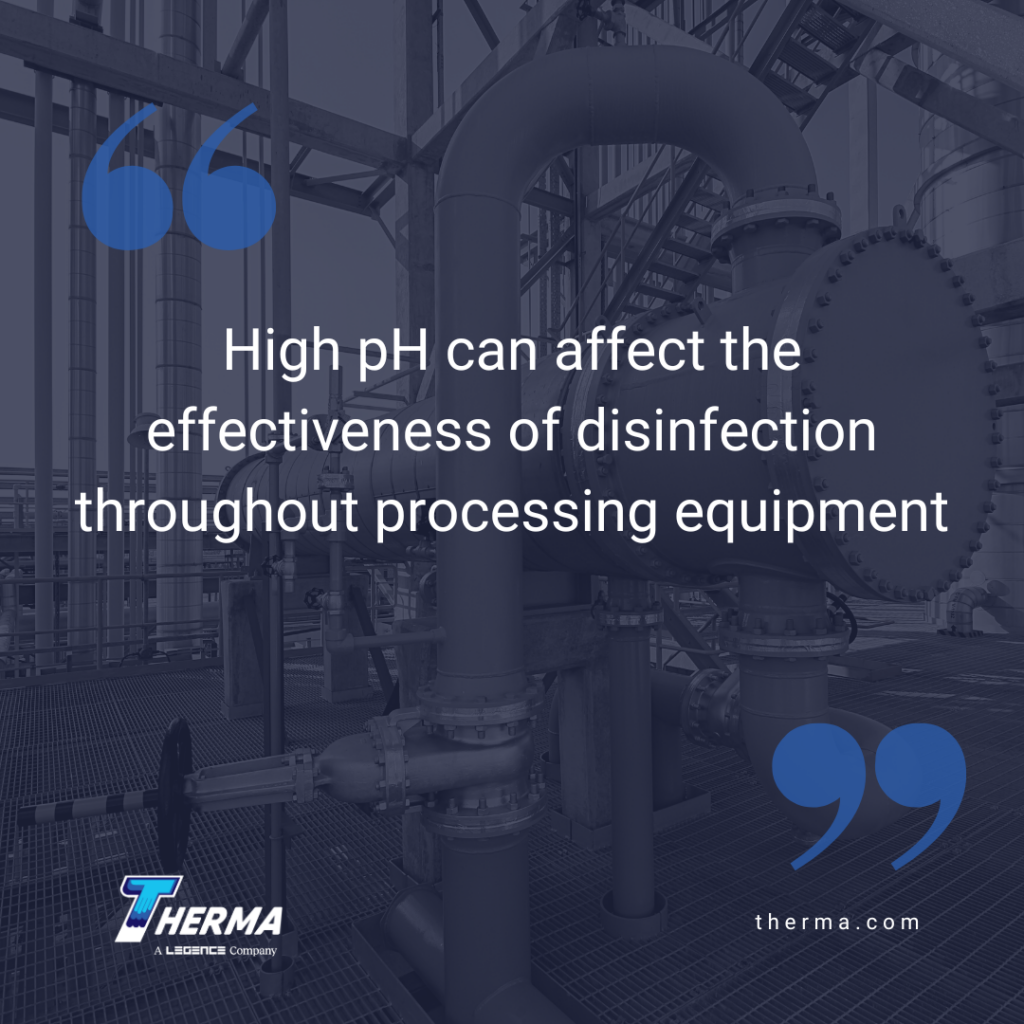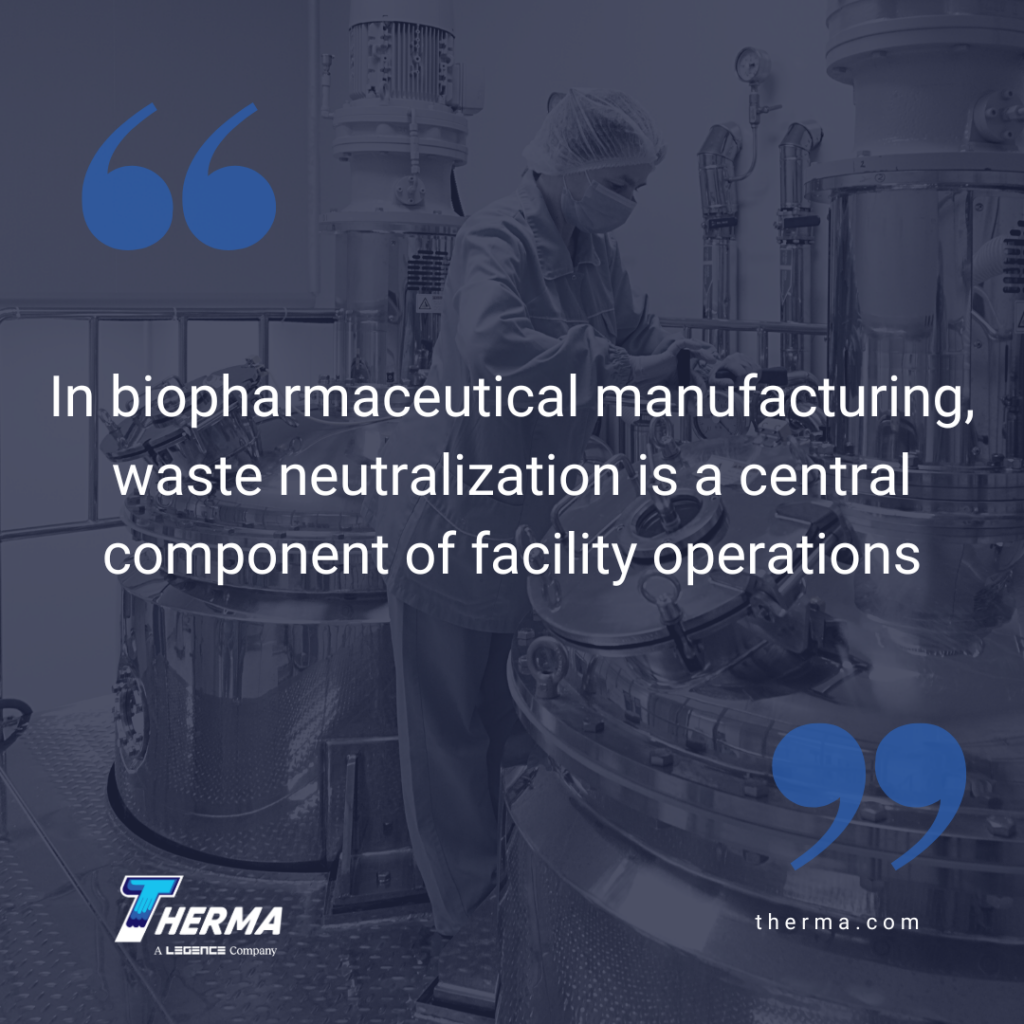by Ali Kriscenski
The process of manufacturing can create waste products that are unusable in production. As pH levels in waste materials can have environmental impacts, monitoring pH and neutralizing waste are critical to ensuring compliance with environmental regulations. In certain industries, such as biopharmaceutical manufacturing, waste neutralization is a central component of facility operations. In this article, we’ll look at how to manage pH in manufacturing byproduct streams.
What is pH?
The acidic or basic properties of materials and solutions are measured by units of pH. On a scale of 0-14 pH, many natural substances fall in the range between 6-8 pH including milk, blood, and water. pHs less than 7 are acidic, such as citrus, while pHs above 7 are basic (or alkaline), such as bleaches. In natural ecosystems, pH imbalance can be an indication of pollution or other environmental impacts.
Waste Neutralization and Water Quality
In waste streams, the acidic or basic properties of materials are measured by pH. The pH range conveys the solubility and usability of wastewater. In pH-balanced natural water bodies, the usability of the water is its capacity to carry nutrients, such as phosphorus and nitrogen, that benefits fish, wildlife, soils, and plants. The neutralization of waste and wastewater is an important measure to prevent pollution in the environment.
Waste Neutralization in Industrial Wastewater
The protection of natural waterways is a driver in monitoring and managing pH in industrial wastewater. For this reason, both State and Federal regulations place requirements on industrial manufacturing facilities regarding wastewater discharge. Facilities are required to neutralize wastewater before it reenters the hydrological cycle, including discharge to holding ponds, septic systems, or direct discharge into waterways.
Waste Neutralization Systems (also called pH Neutralization) can be fully custom designed to integrate with manufacturing processing systems. While neutralization is the end result, the process of neutralization varies between types of manufacturing. Variables such as temperature, acidity level, and other attributes of waste create varied neutralization techniques to ensure effluent pH is balanced safely.
Waste Neutralization Batch System Basics
While requirements may vary between industries, pH neutralization systems are engineered with similar components. These include holding tanks to receive wastewater, chemical tanks, mixers, pumps, sensors, and controls. In a batch system, effluent is transferred to a holding tank and treated with a mix of chemicals through carefully metered controls. The effluent is tested and adjustments are made in the chemical treatment until a neutral pH is achieved. As waste is discharged, pH sensors at the discharge location can monitor and record pH levels for compliance documentation.
Challenges in pH Neutralization
The effluent volume, pH testing, chemical treatment, and chemical reactions all pose health and safety risks. The hazard of chemicals, heat, and other exposure makes pH neutralization a highly automation-dependent process. While a straightforward procedure, pH neutralization depends heavily on engineering, instrumentation, and controls. The wastewater neutralization process has many compliance requirements that also rely on equipment. If equipment fails to control conditions or collect accurate data, then a facility could become non-compliant facing fines or other damages.

System Optimization
Just as water and waste pH can affect natural systems, the pH of water used in manufacturing processes can affect the system components and quality control of production. Low pH water can cause corrosion damaging piping and contaminating process lines, which is particularly important in highly sensitive manufacturing such as biopharmaceutical processing. High pH can affect the effectiveness of disinfection throughout processing equipment. Proper design, installation, maintenance, and training all contribute to the efficiency of a neutralization system. Having pH monitoring within process piping informs the criteria for the waste neutralization system.
With a wide range of industry and manufacturing requirements, the configuration and design of pH neutralization systems require industry expertise. Enlisting the help of seasoned professionals to engineer, install, and maintain your facility’s waste neutralization system will ensure you are running at efficiency and maintaining compliance. Contact Therma to learn more.
AUTHOR BIO
Ali Kriscenski was trained in high-performance building design at Boston Architectural College. She has worked with leading architecture and construction firms in NYC and New England and served on the executive team at the Forest Stewardship Council International. She was the managing editor at Inhabitat and has worked pro bono for the Green Building Institute, ISEAL Alliance, and Habitat for Humanity.
Sources
EPA – Industrial Effluent Guidelines
Water Tech Online – Innovative Techniques for Managing Wastewater








